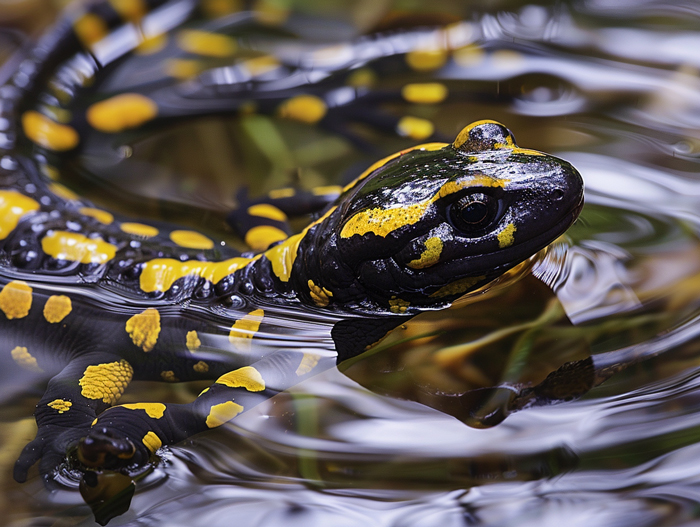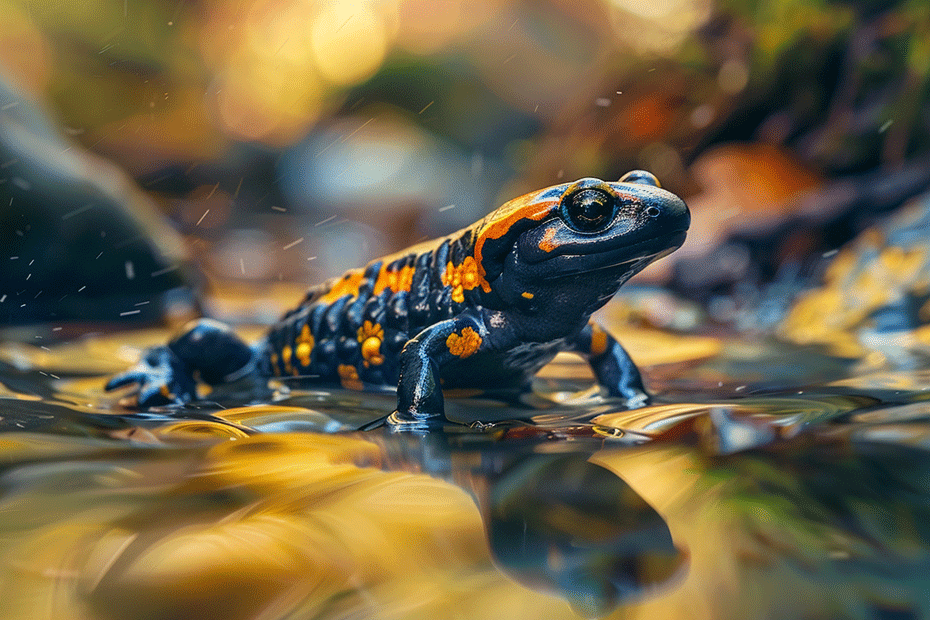Are you curious about whether salamanders can swim? These fascinating creatures are known for their unique abilities, but can they navigate the waters with ease? Let’s jump into the world of salamanders and explore their swimming skills.
Salamanders are known for their diverse range of habitats, from forests to wetlands. But how do they fare in the water? Understanding their swimming capabilities can shed light on their survival strategies and behavior. Let’s uncover the truth behind whether salamanders are adept swimmers.
Key Takeaways
- Salamanders are adept swimmers, utilizing their long bodies and tails for propulsion.
- They come in various types with different colors and patterns, blending in for camouflage.
- Environmental factors like water temperature and currents influence their swimming behavior.
- Salamanders are known for their exceptional regenerative abilities, able to regrow lost limbs or tails.
Can Salamanders Swim

Understanding Salamanders
- Salamanders are amphibians known for their slender bodies, long tails, and moist skin.
- They typically inhabit moist environments like forests, wetlands, or underground burrows.
Types of Salamanders

- Salamanders come in various types, from the neotenic Axolotl to the lungless species that breathe through their skin.
- These creatures display a wide range of colors and patterns, blending in with their surroundings for camouflage.
- Salamanders are generally adept swimmers, utilizing their long bodies and tails for propulsion.
- Many species showcase undulating motions while swimming, gracefully exploring through water environments.
| Key Fact: | Salamanders are known for their exceptional regenerative abilities, able to regrow lost limbs or tails. |
Factors Affecting Salamanders’ Swimming

Size and Shape
- Salamanders vary in size and shape, influencing their swimming abilities.
- Larger species may move slower in water due to increased drag.
- Streamlined bodies aid swimming efficiency in different environments.
- Salamanders adapt to varied habitats like forests, wetlands, and underground burrows.
- Environmental factors such as water temperature and currents impact their swimming behavior.
- Water clarity affects visibility and predation risks for salamanders.
Conclusion
Understanding the complexities of salamanders’ swimming abilities sheds light on their remarkable adaptability in various environments. Factors such as size, shape, and environmental conditions play crucial roles in determining how efficiently these amphibians navigate through water. Larger species may face challenges with increased drag, while streamlined bodies enable smoother movement. By adapting to diverse habitats and responding to environmental cues, salamanders showcase their unique swimming capabilities that help them thrive in different ecosystems. Exploring these aspects not only enriches our knowledge of these fascinating creatures but also highlights the intricate balance between form and function in the natural world.

Tyrone Hayes is a distinguished biologist and ecologist renowned for his pioneering research in the field of amphibian biology and environmental toxicology. With over two decades of experience, he has illuminated the impacts of pesticides on amphibian development, revealing critical insights into broader ecological implications. Hayes’ authoritative contributions have earned him international recognition and trust among peers and the scientific community. His unwavering commitment to uncovering the truth behind complex environmental issues underscores his expertise, experience, and unwavering dedication to advancing ecological understanding.
